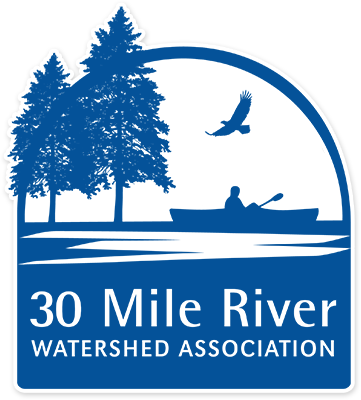As a general rule, lawns don’t protect lakes like native vegetation. Rainwater easily flows over lawns, and the tiny grass roots cannot hold soil together. Significant erosion often occurs over lawns even when no soil loss is noticeable. When nutrient rich soil reaches our lakes, there can be major consequences to lake health, like turning the lake green with algae. Fertilizers and pesticides applied to lawns also end up in the lake, feeding algae.
Native vegetation like trees, shrubs, ground covers and perennials, such as those shown above, better protect the lake. These plants have deeper root systems that hold soil in place, absorb more runoff, and filter out more pollutants. Native species are best because they are adapted to local conditions, requiring little maintenance once established, so you’ll have more time to relax and enjoy the lake. Plus, they provide important habitat and food for birds, butterflies, and other wildlife.
Here are a few tips as you make the transition to native plants:
- Prioritize the area closest to the lake where the impact is the greatest.
- Allow an area to fill in naturally with native plants by no longer mowing.
- Mow your lawn using the highest mower setting and leave clippings to mulch in place.
- Stop fertilizing your lawn.
For more information, check out this helpful guide: Lakes Like Less Lawn.
Check back each month for a new LakeSmart tip! Let us know if there is something you would like to see covered by emailing lidie@30mileriver.org .

